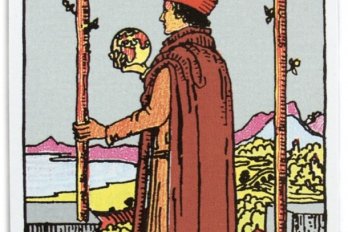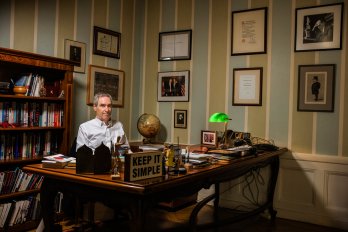napa valley—Last season’s sleeper hit Sideways is about the comic antics of two friends who travel from LA to Santa Barbara County for a weekend of wine tasting, sniffing, feeling, and bonding. Nominated for five Academy Awards, Sideways has a pastoral charm that made the industry’s best wines appear decidedly low-tech. In reality, nothing could be further from the truth, as vineyards in California are now using the most high-tech expertise and equipment available.
To borrow a Rumsfeldism, in winemaking there are “knowns and unknowns.” At the outset of a growing season, a vineyard manager is never certain how the vintage will taste because there are so many variables: grapes are affected by rain and frost, row orientation, and rootstock. The winemaker’s job is to assess the variables, and at Napa Valley’s Robert Mondavi Winery multi-billion-dollar technology is being used to monitor and augment grape production. The technology comes courtesy of nasa, the world’s most advanced space agency.
In the early nineties, Walter Brooks, a senior researcher with nasa, heard rumblings that the space agency was looking for a new way to use its remote sensing technology. nasa satellites, which can map out acres of land using images taken in visible and infared bandwidths, were originally developed for space missions, but the agency was searching for other practical applications and had seized on agriculture. On a hunch, Brooks contacted his brother Larry, a wine grower in Napa. Would Larry’s vineyard be interested in a joint experiment with nasa, using the satellites to survey the vineyard canopy? Phylloxera, a stubborn, tough-to-kill root louse, had been devastating wine crops in California since the mid-eighties, and maybe nasa’s eyes in the sky could help solve the problem. Larry Brooks worked for a small winery that couldn’t handle the equipment needs of the project but he suggested Robert Mondavi Winery. Mondavi jumped on the idea, and over the past ten years the California wine grower and other wineries in the region have been using space hardware with awe-inspiring results.
“In one early project, we used satellites to identify and separate areas of low, medium, and high vigour [foliage density] within a vineyard block that was traditionally harvested together,” says Lee Johnson, a senior researcher at nasa. No one knew how sectioning off smaller blocks would affect taste. But when wine snobs and sots started raving about a 1997 vintage that had been developed with the help of satellite images, Mondavi became hooked on the technology.
Johnson likens the “civilian use ” of nasa’s satellites to placing cameras on hot-air balloons to get aerial shots of the landscape, as was done after the 1906 San Francisco earthquake. But the technology goes beyond taking pictures from space. Satellites monitor climate data to help determine ideal irrigation practices, and computers assimilate information from leaves that Johnson collects in the fields, allowing vineyards to arrive at ideal foliage levels for different grape varietals. Ramakrishna Nemani, another senior researcher at nasa, compares the Napa Valley to Burgundy, where the vineyards are much smaller and climate and soil conditions have been chronicled over centuries. “At a place like Mondavi, they have hundreds of acres,” Nemani explains. “They have no way of knowing which corner of their vineyard is doing what.”
“We’re learning in twenty or thirty years what it took a hundred years in Burgundy to analyse,” echoes former Mondavi wine educator Gilles de Chambure. The 1997 Mondavi Reserve vintage not only impressed drinkers, it also received top scores from wine critics, and its price jumped from $18 to $35 (US) a bottle.
With distinctly non-traditional tools such as pressure bombs and ground-penetrating radar now part of the Napa Valley arsenal, you have to wonder if any artistry remains. At least one aspect of the business is still decidedly low-tech, however. At the right time of year, Mondavi brings in a priest, and sometimes a rabbi and a minister, for the annual “blessing of the grapes.” If there have to be unknowns that even nasa can’t control, best to leave them to a higher power.




